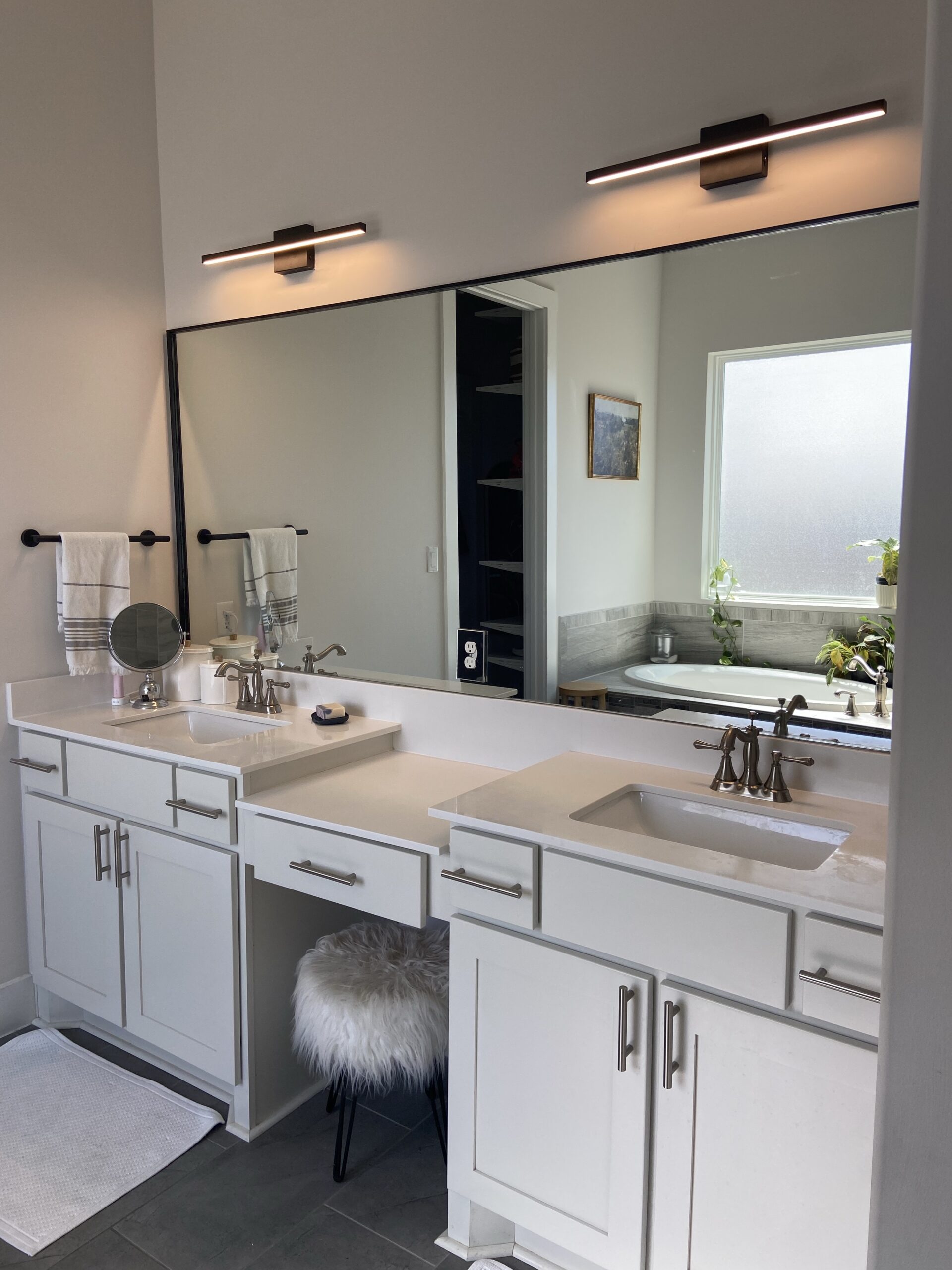The past several years, I have been collecting items to build the flower garden of my dreams. After years of dreaming of a beautiful rose garden, I decided to finally embark on my garden journey. I wanted to add dimension to the garden and make it look beautiful. Garden Obelisks are beautiful and functional in any garden, although they can be very pricey to purchase. Instead of buying garden obelisks, I attempted to build them myself. Follow me on my journey to build the perfect DIY Garden Obelisks.
Supplies
- (2) 2in x 2in x 8 Foot Pressure Treated Southern Pine Lumber
- (2) 1in x 2in x 8 Foot Pressure Treated Southern Pine Lumber
- (1) 4in x 4in Pressure Treated Wood Pyramid Post Cap
- (1) Gothic Wood Post Cap Finial
- Wood Glue
- Deck Screws
I was able to purchase all of my supplies at Home Depot. My Home Depot sold the Wood Post Finials in singles, however, if you plan on making a bunch of obelisks you can buy the value pack of finials online.
The list of supplies above is for building one Garden Obelisk. If you want to build more than one obelisk then just buy the appropriate materials based on the list above.
Constructing the Garden Obelisks
There are several tutorials on how to build and create Garden Obelisks online. However, after several trial and error attempts, I found the easiest way to build them.
First, take the 2in x 2in x 8 Foot pressure treated lumber and cut both pieces directly in half. Each board should be 4 feet in length. Once you have 4 boards, adjust your saw. Set the miter saw to 7 degree angles on both the bottom swivel and the bevel cut. Line all 4 of the boards up on the miter saw and cut a small portion off one side of all 4 boards using the 7 degree angles.
Once the wood is cut, begin assembling each triangle side. Place two pieces of the 4 foot cut wood in the shape of a triangle with the angle cut sides being on the bottom. Next, take the 1in x 2in x 8ft wood and cut three varying sizes to connect the triangle together. You can cut and place the pieces wherever you think it will look best. One piece will be towards the top, one towards the bottom, and one in the middle. Once you place the pieces for the first triangle, you must ensure you place the pieces in the exact same location on the next triangle so the pieces match up when they are attached.
While some people make and connect the smaller pieces with 45 degree angle cuts around the obelisk, I found it was too hard to do with pressure treated lumber because not all of the lumber is straight and level. To avoid hassle, avoid doing any angle cuts for the 1in x 2in x 8 foot wood pieces.
Once the 1in x 2in x 8ft pieces are in the proper position on the triangle, attach them using wood glue and deck screws.

Next, stand up both triangles and connect them making a tent like structure. In order to keep the wood stable, use wood clamps to hold them in place.
Pre Drill a hole in the center of the post cap for the finial. Attach the post cap to the top of the triangles using 4 wood screws. Screw the wood finial into the pre drilled hole at the top of the post cap.
In order to stabilize the structure, I added 2 pieces of 1in x 2in wood to each open side of the obelisk using wood screws. Then, I added a longer 1in x 2in piece of wood to the middle of each original triangle section for design aesthetic. Once the structure is built and stable you can play around with the wood pieces and add as much or as little detail as your wish depending on style and budget.
Once the obelisk is built you can stain or paint the obelisk if you wish. I chose to leave the obelisks in their original state because I liked the natural wood look.










































































































